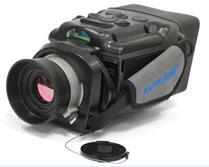Gas leakages are extremely hazardous, and can cause loss of life and destruction of property. Preventative inspections are paramount and thermal imaging technology can help.
Gas Leak Detection Made Easy
The oil and gas industries are essential components of the global economy. However, disaster can strike if oil and gas leaks are not detected and repaired. Fortunately, technology has advanced to such a degree that it is now possible to employ cost-effective solutions to prevent multimillion dollar disasters, and the loss of human life. Routine maintenance inspectors can now repair gas leaks, and detect gas leaks at a distance, and this is having a game-changing effect on the industry.
For one thing, compliance with regulatory authorities is easily undertaken, and this limits the cost of repairs. The leading gas leak detection companies have a variety of tailor-made solutions to make the entire process easier. The problem with most gas leakages – except gas that is scented – is that it goes unnoticed. Gas is an unseen danger to human beings and the energy emissions are not on the visible spectrum. As such, only thermal imaging technology can detect and evaluate these types of gas leakages. Thermal imaging occupies a unique domain on the electromagnetic spectrum – and humans can see gas emissions via their heat energy emissions.
Making the Case for Thermal Imaging Devices
Gas leakages are a major culprit in fires, explosions, and the loss of life. Companies have been hard at work trying to develop the requisite technologies to for gas leak detection early so that repair work can be undertaken. The economic impact of gas leakage is substantial, and preventative measures have been touted as the best-practice approach to adopt. These preventive inspections require sophisticated technology that can monitor VOC gas leaks, hydrocarbon emissions and report such data to the control room through a reliable, and customized software system. Several high-end devices have been created to meet these exigencies, including the EyeCGas CO2 device. This is a handheld OGI camera that can detect carbon dioxide gas emissions. This camera allows the user to detect small concentrations of CO2 in industrial processes and enhanced oil recovery operations.
The video explains how these thermal imaging devices detect gas leaks.
Which Devices Are Best for Detecting Gas Leaks?
The leading thermal imaging companies have created various devices. Optical gas imaging – OGI – utilizes sensitive IR cameras that can detect minuscule gas emissions. These cameras offer the most effective solution to safely detect leaks and then have them repaired. Of course, the cost savings with such technology are immense, since fines will be avoided and the integrity of structures will be maintained. The #1 reason to invest in optical gas imaging cameras is the prevention of loss of human life. Different types of OGI cameras have been created, including those that are certified for various types of hazardous environments. Stationary products and handheld devices are now available, depending on the needs of the company. An EPA compliant handheld device is the EyeCGas cam which can detect 30+ VOC gases and hydrocarbons such as hexane, methane and benzene



